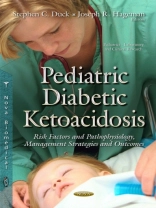The future of persons with Type 1 Diabetes Mellitus is continuing to "look brighter" with the advent of biomedical technology. Nevertheless, the acute consequences of this disease remains a significant threat. Diabetic ketoacidosis [DKA] remains the most serious challenge for primary care physicians and subspecialists caring for children and young persons with Diabetes Mellitus. Its prevention is possible only among those already diagnosed. Awareness of the etiology and clinical presenting signs among children of all ages is requisite for primary care and emergency department staff [Chapter 1]. While more likely to occur among those with Type 1 diabetes, a significant proportion of children with Type 2 diabetes are also at risk [Chapter 3]. Once diagnosed, the physician team must understand not only what biochemical imbalances must be corrected, but also what life-threatening complications must be avoided [Chapter 1]. The path through that "maze" is not yet fully interpreted; many choices remain as options, but each must be carefully evaluated. Diagnosis among the very young is a challenge because of they lack self-awareness and clarity of signs and symptoms [Chapter 2]. Education of the primary care staff is critical and able to alter the incidence of DKA at the time of diagnosis. Institutions that treat children and adolescents with DKA need an informed Emergency Department as well as Pediatric Intensive Care Facilities. Access to appropriate consultations, such as pediatric endocrinology, cardiology, neurology and neurosurgery are crucial. The initiation of care is critical, and occurs invariably in the Emergency Department [Chapter 4]. Meticulous documentation of fluid composition and volume, insulin administration, vital signs and neurological state of well-being is essential. These will facilitate the transition to the appropriate in-patient service, whose task is to understand the biological impact of fluid rehydration and fluid flux, as well as hypocapnea, hyperglycemia and cranial perfusion [Chapter 5]. The current standards of care all but prevent most of the varied biochemical complications of "appropriate" care for persons with DKA. However, awareness of these possibilities is crucial [Chapter 6]. Yet, one complication remains unexplained and too often unpredicted, and it is devastating to the pediatric patient: cerebral edema. This complication, its prevention and treatment are discussed [Chapter 6]. Type 2 diabetes mellitus is continuing to increase in incidence and prevalence among all ages. Once thought to be "non-ketosis prone" diabetes, now persons undiagnosed or previously diagnosed do obtain DKA. They, however, have other unique medical requirements that must be applied to their treatment [Chapter 3]. Hyperglycemic hyperosmolar state is a complication no longer limited to adults with diabetes or children with Type 2 diabetes mellitus. While the incidence is fortunately lower than that of DKA, its outcome is potentially direr. Appreciation of the unique treatment requirements and guidelines are discussed [Chapter 7]. This monograph provides a comprehensive compendium to those caring for children of all ages with diabetic ketoacidosis, its related disorders and associated conditions.
Stephen C Duck & Joseph R. Hageman
Pediatric Diabetic Ketoacidosis [PDF ebook]
Risk Factors and Pathophysiology, Management Strategies and Outcomes
Pediatric Diabetic Ketoacidosis [PDF ebook]
Risk Factors and Pathophysiology, Management Strategies and Outcomes
Köp den här e-boken och få 1 till GRATIS!
Formatera PDF ● Sidor 120 ● ISBN 9781634832533 ● Redaktör Stephen C Duck & Joseph R. Hageman ● Utgivare Nova Science Publishers ● Publicerad 2015 ● Nedladdningsbara 3 gånger ● Valuta EUR ● ID 7225952 ● Kopieringsskydd Adobe DRM
Kräver en DRM-kapabel e-läsare












